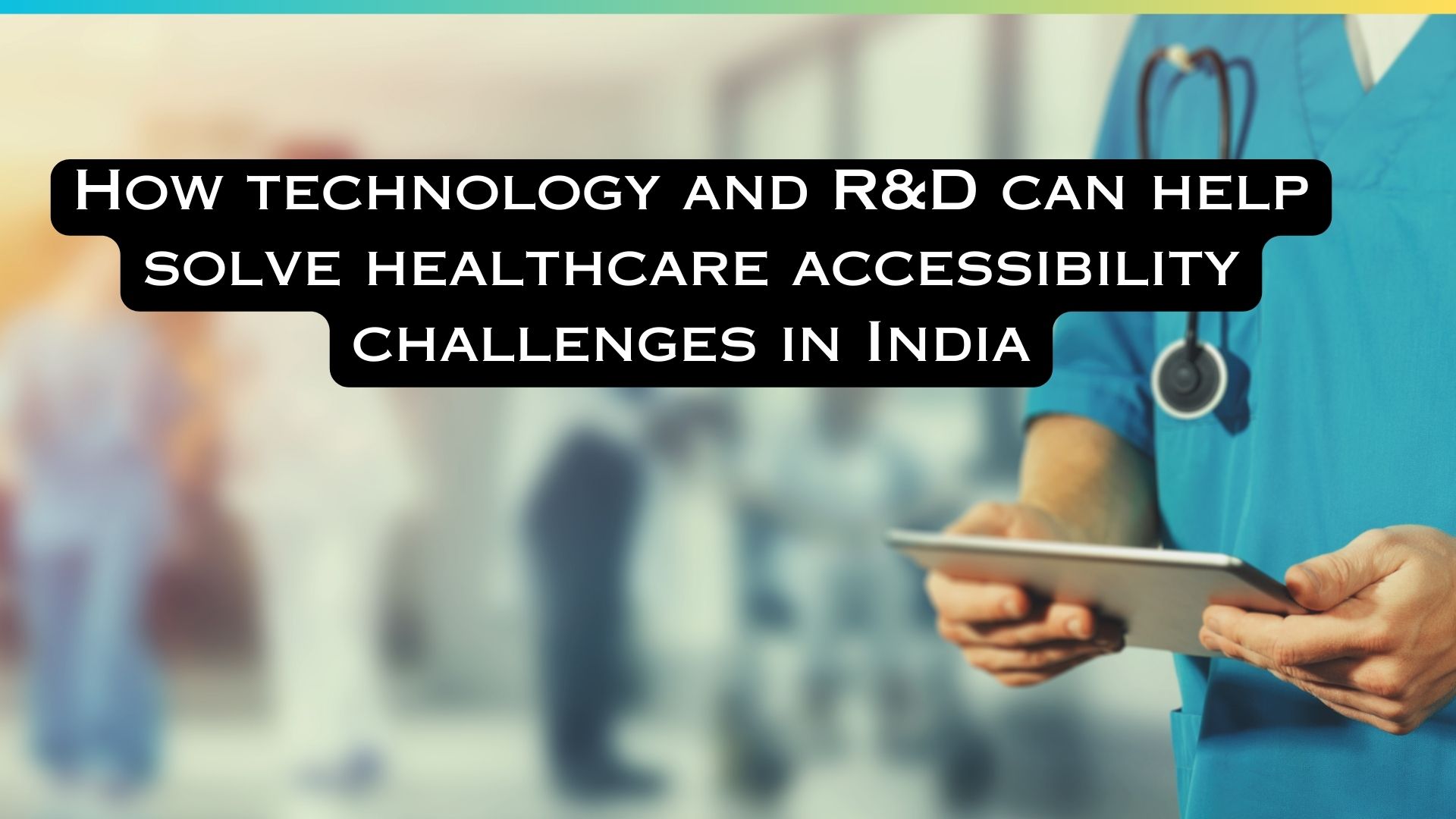Addressing healthcare accessibility challenges in India requires a multifaceted approach that leverages technology, research, and development (R&D) to overcome barriers to healthcare delivery, especially in rural and underserved areas. Here’s how technology and R&D can help solve healthcare accessibility challenges in India:
- Telemedicine and Telehealth Solutions: Technology-enabled telemedicine and telehealth platforms facilitate remote consultations, diagnosis, and treatment delivery, enabling patients in remote and rural areas to access healthcare services from specialists and healthcare providers located in urban centers. Telemedicine reduces the need for travel, lowers healthcare costs, and improves healthcare accessibility for populations with limited access to healthcare facilities.
- Mobile Health (mHealth) Applications: Mobile health applications provide access to health information, preventive care tips, and wellness resources through mobile devices. These applications enable individuals to monitor their health, receive personalized health recommendations, and access virtual consultations with healthcare providers, thereby enhancing healthcare accessibility and promoting proactive health management.
- Digital Health Records and Health Information Systems: Digital health records and health information systems digitize patient medical records, streamline healthcare workflows, and facilitate information sharing among healthcare providers. Centralized health records enable seamless care coordination, reduce duplication of tests and treatments, and enhance patient safety and continuity of care, improving healthcare accessibility and quality.
- Remote Monitoring Devices and Wearable Technology: Remote monitoring devices and wearable technology track vital signs, monitor chronic conditions, and provide real-time health data to patients and healthcare providers. These devices enable remote patient monitoring, early detection of health issues, and timely intervention, enhancing healthcare accessibility for patients with chronic illnesses and enabling proactive health management.
- Community Health Initiatives and Outreach Programs: Community health initiatives and outreach programs leverage technology and community engagement strategies to raise awareness about preventive care, maternal and child health, and infectious disease control. Mobile clinics, health camps, and community health workers deliver essential healthcare services, health education, and preventive interventions to underserved populations, improving healthcare accessibility and promoting health equity.
- Healthcare Infrastructure Development: R&D efforts focus on developing innovative healthcare infrastructure solutions, including mobile clinics, telemedicine kiosks, and portable medical devices, to expand access to healthcare services in remote and underserved areas. These initiatives strengthen the healthcare delivery system, bridge geographical barriers, and ensure equitable access to healthcare for all populations, regardless of their location or socioeconomic status.
- Public-Private Partnerships (PPPs): Public-private partnerships bring together government agencies, private sector organizations, and non-profit entities to collaborate on healthcare initiatives, infrastructure development, and technology-driven solutions. PPPs leverage the resources, expertise, and networks of multiple stakeholders to address healthcare accessibility challenges, foster innovation, and drive sustainable healthcare delivery models.
- Research and Innovation in Healthcare Delivery Models: R&D initiatives focus on developing innovative healthcare delivery models, such as hub-and-spoke networks, mobile health units, and community health centers, to optimize healthcare access and utilization. These models integrate technology, community engagement, and primary care services to provide comprehensive, patient-centered care to underserved populations, improving healthcare outcomes and reducing health disparities.
In conclusion, technology, research, and development play a critical role in solving healthcare accessibility challenges in India by expanding access to quality healthcare services, promoting preventive care, and strengthening healthcare infrastructure and delivery systems. By leveraging innovative solutions and collaborative partnerships, India can overcome barriers to healthcare access and achieve equitable healthcare delivery for all its citizens.


No responses yet